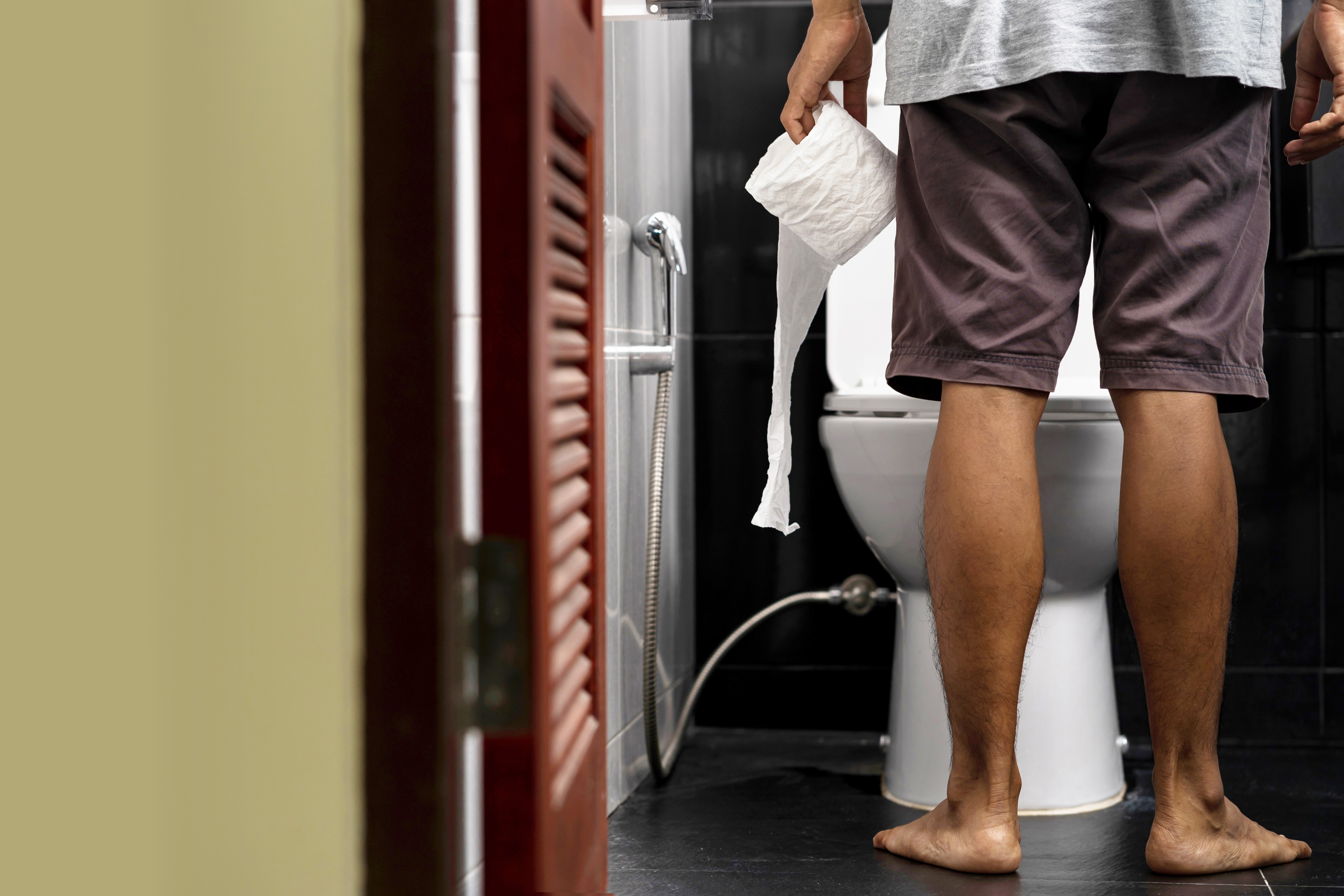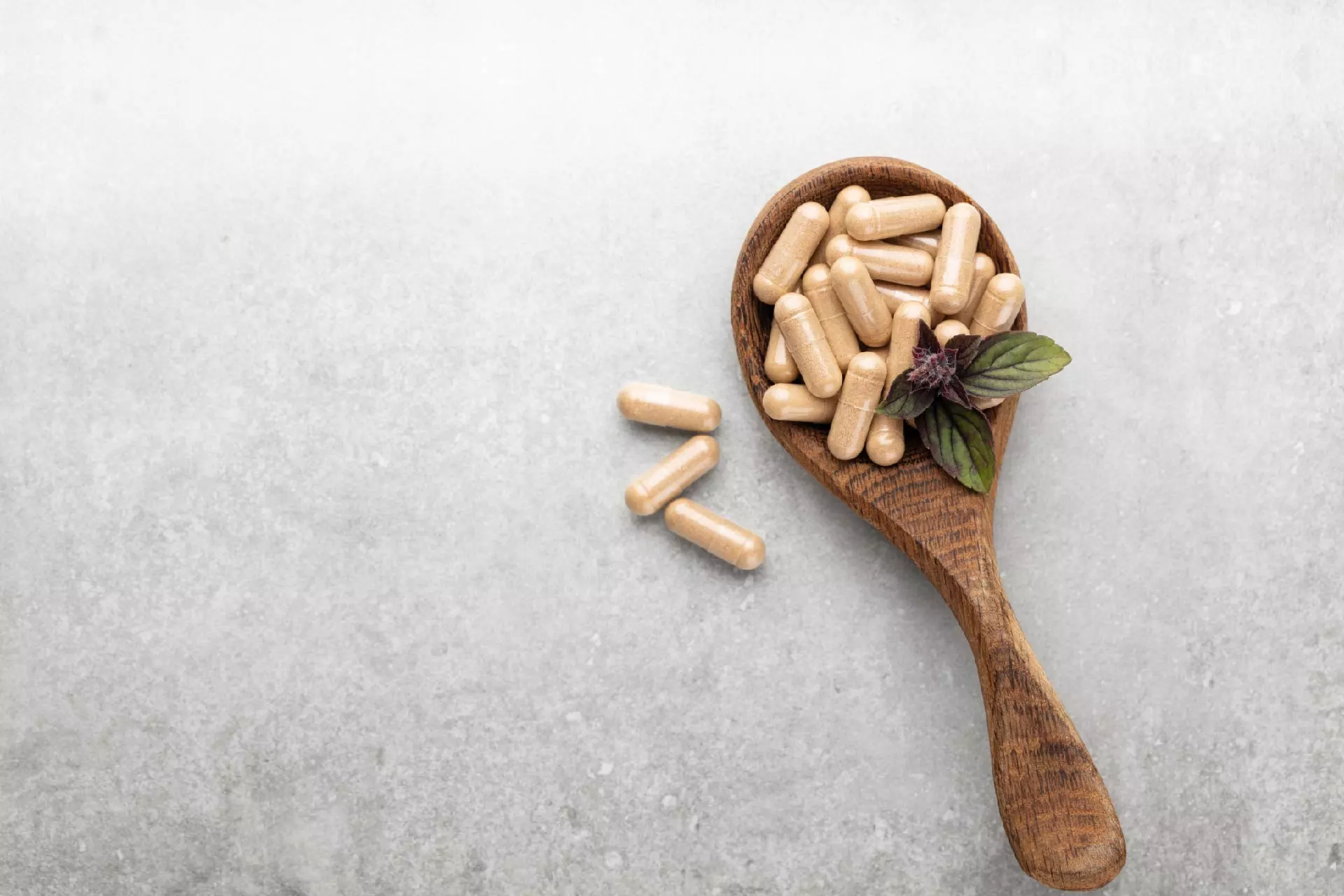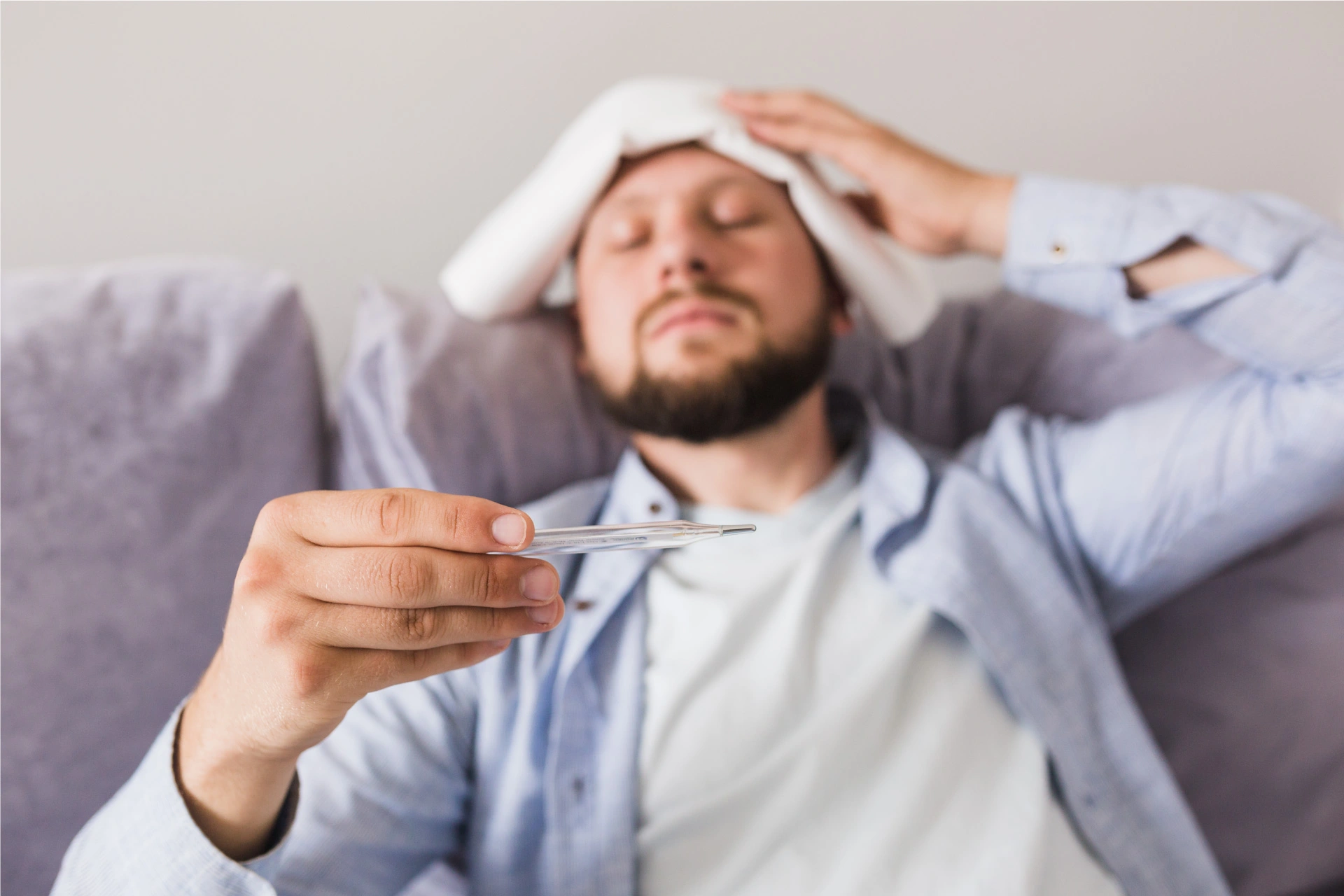General Health | 10 min read
Piles: Causes, Types, Prevention Tips and Complications
Medically reviewed by
Table of Content
Key Takeaways
- Haemorrhoids, commonly known as piles, are enlarged veins that resemble varicose veins in the lower rectum and anus
- Internal haemorrhoids form inside the rectum, while external haemorrhoids form under the skin around the anus
- Maintaining soft stools that pass smoothly is the greatest approach to avoiding haemorrhoids
Piles or haemorrhoids are a health condition related to the digestive tract. Even as it is common to resort to home remedies, it can get worse over time. Moreover, most people don’t experience symptoms for a long time as they aren’t as obvious.
Piles affect the anus, which is a sensitive area that not many are open to having diagnosed physically. The problem presents itself in 4 different grades and can be self-managed with the right food. However, it does get progressively worse, even to a state that no amount of self-help information can help. Keep yourself informed about it so that you can connect with a specialist as and when required.
What are Piles?
Piles or haemorrhoids are inflamed collections of tissue or veins inside the lower rectum or anus. They can develop both internally, within the rectum, and externally, under the skin around the anal cavity. It is found that 3 out of 4 adults are likely to develop the problem in their life. The condition may last several days or weeks but can be treated with proper care.
Types of Piles
The rectum can develop haemorrhoids inside or outside of it. The type is determined by the location where the enlarged vein appears. Types consist of:
External:
Externally, the area around the anus develops swollen veins beneath the skin. Poop exits through the canal in your anus. Haemorrhoids on the outside can itch and hurt. They occasionally bleed. They occasionally fill up with blood that could clot. Although this is not harmful, it could cause pain and swelling.
Internal:
Internally, the rectum develops swollen veins. The portion of your digestive system, the rectum, joins the anus to the colon (large intestine). Although internal haemorrhoids might bleed, they often don't hurt.
Prolapsed:
Haemorrhoids that have prolapsed—that is, swollen and stretched outside of the anus—can be internal or external. These haemorrhoids can bleed and hurt.
Internal Piles on a Four-Point Scale
Internal piles are typically located up to 4cm from the anus and this is what makes it very difficult to identify. External piles present around the anus or the outside edge as small lumps. These are quite painful, itchy and can further worsen if they develop blood clots. There are 4 types of piles:
Grade I
Inflammation inside the lining of the anus, unlikely to be visible to external examination.
Grade II
In this, the inflammation is larger than in Grade I and is still inside the anus. There are occasions when the swollen vein or tissue may get pushed out of the anus during the passing of stools and later return.
Grade III
Known as prolapsed hemorrhoids, it appears externally. The tissue can be pushed back.
Grade IV
Significantly larger than Grade III and can cause immense pain if lumps develop blood clots. The tissue cannot be pushed back.
Piles Causes
While it is not completely clear what causes piles, it is believed that increased pressure in the rectum has a role to play. This causes the blood vessels to stretch and swell, thus causing piles. Some possible causes of piles include:
- Pregnancy
- Chronic constipation
- Heavy lifting
- Obesity
- Low-fibre diet
- Excessive straining during bowel movements
- Anal intercourse
Age is another factor as well. As you grow old, the blood vessels in the anal region stretch and weaken, making it more likely for the elderly to develop this condition.
Causes Of Piles In Female
Typically, piles develop as a result of increasing pressure on the anal cavity and lower section of the rectum, which causes the veins to protrude and grow into lumps. Women's haemorrhoids may develop as a result of the following:
- Excessive weight gain, frequently caused by pregnancy. This raises pelvic pressure and makes piles more likely to form in women.
- Straining while passing faeces is a frequent symptom of constipation. Pressure on the lower rectum and anus veins rises as a result of tension. This causes the veins to enlarge and inflame, which causes haemorrhoids.
- Too much weightlifting can increase the pressure on your lower body, which in women can develop piles.
- A diet is deficient in fibre can result into piles. By raising the water content of the faeces, fibre aids in increasing their volume. Lack of fibre in the diet can cause constipation, which in turn can cause piles.
Piles Symptoms
The symptoms include:
- Slimy discharge from the anus
- Itchy and sore skin around the anus
- Pain during the passing of stools
- Lump around the anus
- Bleeding during a bowel movement
- Excessive anal bleeding
- Faecal incontinence
Symptoms Of Piles In Males
Although the specific cause of piles in men is unknown, they are strongly linked to elevating the pressure in the tissues and blood vessels in the anal region. However, a few of the most typical reasons for piles in men include:
- Persistent constipation
- Diet low in fibre
- Struggling to pass stools
- Performing heavy lifting
- Age-related increases in anal tone
Piles can escalate into a more severe condition. This can include:
- Profuse anal bleeding that may also cause anaemia
- Infection
- The inability to control bowel movements, or faecal incontinence
- Anal fistula, in which a new passageway is created between the skin's surface and the inside of the anus
- A strangulated haemorrhoid, in which the blood supply has been cut off, can develop consequences, including an infection or a blood clot
On noticing these symptoms, you must prioritise healthcare. Untreated piles can lead to anaemia, i.e., chronic blood loss due. This means the body doesn’t have enough healthy red blood cells to transport oxygen optimally. An anal fistula is another deadly complication, which then becomes a hotbed for infection.
Piles Treatment
If your symptoms worsen or start to affect your regular activities or sleep, you should visit your health professional. If symptoms don't get better after a week of home remedies, you must also seek help. Haemorrhoids may be treated by your doctor using the following:
- Rubber band ligation: This procedure stops blood flow to a vein by wrapping a short rubber band around the base of a haemorrhoid.
- Electrocoagulation: An electric current is used to block blood flow to a haemorrhoid.
- Infrared coagulation:
- A tiny probe is placed into the rectum and transfers heat to remove the haemorrhoid.
- Sclerotherapy: Haemorrhoid tissue is destroyed by injecting a chemical into the enlarged vein.
Surgical Procedures Comprise
- Haemorrhoidectomy: This operation eliminates prolapsed internal haemorrhoids or big external haemorrhoids.
- Stapling for haemorrhoids: A stapling tool is used to remove an internal haemorrhoids. Alternatively, it keeps a prolapsed internal haemorrhoid inside the anus after pulling it back inside.
Piles can resolve on their own and be managed at home. But once it progresses to grade III or grade IV, you will have to seek medical care. The medicine is typically used to manage pain and the doctor may give you painkillers. In some cases, treatment may involve fiber supplements to help reduce the strain during bowel movements. Similarly, you may be prescribed laxatives to address constipation.
You can try and manage your symptoms using home remedies:
- Soak in a tub of warm water to relieve pain
- Clean your anus with warm water
- Avoid using rough toilet paper
- Eat plenty of high-fibre foods and drink sufficient water to avoid hard stools
- Reduce caffeine and alcohol to keep constipation to a minimum
- Use a cold ice pack to relieve pain from external piles
Surgical treatment is also an option, in case home remedies and medication do not work.
Piles Prevention
Maintaining soft stools that pass smoothly is the greatest approach to avoiding haemorrhoids. Consider the following advice to prevent haemorrhoids and lessen their symptoms:
Consume Fiber-Rich Meals
Eat more whole grains, fruits, and veggies. By doing this, you can avoid the straining that can lead to haemorrhoids because it softens and bulks up the faeces. To prevent issues with gas, gradually incorporate more fibre into your diet.
Drink a Lot of Water
To maintain soft stools, consume six to eight glasses of water daily along with other beverages (avoid alcohol).
Suggestions for Fibre Supplements
The average person's diet falls short of the 20 to 30 grammes of fibre per day that are advised. Over-the-counter fibre supplements, such as psyllium (Metamucil) or methylcellulose (Citrucel), have been demonstrated in studies to improve overall symptoms and bleeding from haemorrhoids. Drink at least eight glasses of water or other fluids daily if you take fibre supplements. If not, the supplements may worsen or induce constipation.
Avoid Tension
Pressure in the lower rectum's veins increases when you stifle your breathing and strain to pass faeces.
As Soon as You Have the Urge, Leave
Your faeces can get drier and more difficult to pass if you wait to relieve yourself of the desire to go.
Exercise
Engage in some form of exercise to help prevent constipation and to relieve the pressure that prolonged standing or sitting can put on the veins.
Try to Limit your Sitting Time
Too much time spent sitting, especially on the toilet, might put more pressure on the anus veins.
Preventing piles from developing is fairly easy. You should definitely work towards it actively. Here are a few tips to rely on:
- Avoid straining during bowel movements
- Do not sit on the toilet for extended periods of time
- Avoid sitting on hard floors or concrete
- Drink plenty of water
- Exercise regularly to avoid constipation
To treat it naturally, it is important to stay in touch with a healthcare professional. This is because it can be very easily treated at home and might help you avoid surgery. Thankfully, with the healthcare provision provided by Bajaj Finserv Health, such healthcare is now easy to access and convenient too!
How are Haemorrhoids Diagnosed?
Haemorrhoids are diagnosed by your doctor based on your symptoms and a physical examination. Additionally, you might have:
Digital Rectal Exam
A gloved, lubricated finger is inserted into the rectum by your doctor during a digital rectal exam to feel for enlarged veins.
Anoscopy
To observe the lining of the anus and rectum, your doctor uses an anoscope, a lit tube.
Sigmoidoscopy
To examine the lower (sigmoid) portion of the colon and rectum, your doctor will use a sigmoidoscope, a lighted tube with a camera. Both rigid and flexible sigmoidoscopies are types of procedures (proctoscopy).
These exams aren't painful, but they could be uncomfortable. They often take place without anaesthetic in a doctor's office or an outpatient facility.
To confirm results from other testing or look for indications of colon cancer, your doctor might do a colonoscopy. An anaesthetic is needed for this outpatient treatment.
Complications of Haemorrhoids
Although haemorrhoids can be unpleasant and painful, they rarely result in major issues. Rare complications of haemorrhoids include:
- Anemia
- Haemorrhoids that are external form blood clots
- Infection
- Tags on the skin (flap of tissue that hangs off skin)
- Haemorrhoids with strangulations (muscles in the anus cut off blood flow to a prolapsed internal haemorrhoid)
Risk Factors of Piles
The chance of forming piles can be raised by a number of causes, such as:
Pregnancy
During pregnancy, up to 50% of people have haemorrhoids. A person's greater blood volume, increased prevalence of constipation, and increased strain on the pelvis are the causes of this.
Age
Pile formation is more likely to occur in older people. Pile development occurs in almost half of adults over 50.
Weight
According to research, having piles may be more likely in people who are overweight.
Diet
A diet deficient in fibre may raise a person's risk of developing piles.
Home Remedies For Piles
Haemorrhoids frequently disappear without medical intervention. One week or a little longer is the average duration of symptoms like pain and bleeding. You can do the following actions in the meanwhile to reduce symptoms:
- The afflicted region should be treated with over-the-counter drugs that contain hydrocortisone, witch hazel, or lidocaine.
- Increase your water intake.
- Boost your consumption of fiber through diet and supplements. At the very least, consume 20–35 grammes of fibre every day.
- Spend ten to twenty minutes soaking in a warm bath (sitz bath) daily.
- By using laxatives, soften stools.
- For pain and inflammation, take nonsteroidal anti-inflammatory medications (NSAIDs).
After you've pooped, gently pat and clean your bottom with toilet paper infused with lotion or flushable wet wipes. You can also use a washcloth or tissue that has been dampened with water.
This platform - Bajaj Finserv Health, allows you to take advantage of telemedicine services and reap all the benefits it has to offer. With it, you can find the best specialists in your area, book appointments online, and even consult virtually over video. What’s more, you can also track your vitals and send over digital patient records for efficient diagnosis. With such a tool at your disposal, you can manage piles easily and comfortably, while availing yourself healthcare from your home. Prioritise your health and get started!
References
Disclaimer
Please note that this article is solely meant for informational purposes and Bajaj Finserv Health Limited (“BFHL”) does not shoulder any responsibility of the views/advice/information expressed/given by the writer/reviewer/originator. This article should not be considered as a substitute for any medical advice, diagnosis or treatment. Always consult with your trusted physician/qualified healthcare professional to evaluate your medical condition. The above article has been reviewed by a qualified doctor and BFHL is not responsible for any damages for any information or services provided by any third party.





